Norway maple (Acer platanoides)
Sapindaceae, the soapberry family*
(*Aceraceae in older manuals)
How to recognize Norway maple. Maples have leaves that are opposite in arrangement, usually simple in complexity, with palmately lobed margins. The production of paired samaras (winged one-seeded fruits) is a distinctive maple trait. Native North American maples fall into two categories based on the hardness of their wood, but they can also be recognized by their leaf margins. The so-called “soft maples,” of which silver maple and red maple are examples, have serrate (toothed) leaf margins. Sugar maple, with its entire (untoothed) leaf margins is a hard maple. The present species, Norway maple, is a European tree that, wood hardness-wise, is intermediate, but its leaves are so very much like those of sugar maple thay Notway maple is frequently mistaken for sugar maple.
The non-toothed leaves of Norway maple are similar to sugar maple but tend to be 7-lobed rather than 5-lobed, often with especially long leafstalks and a surface that is a darker green and more shiny than sugar maple.
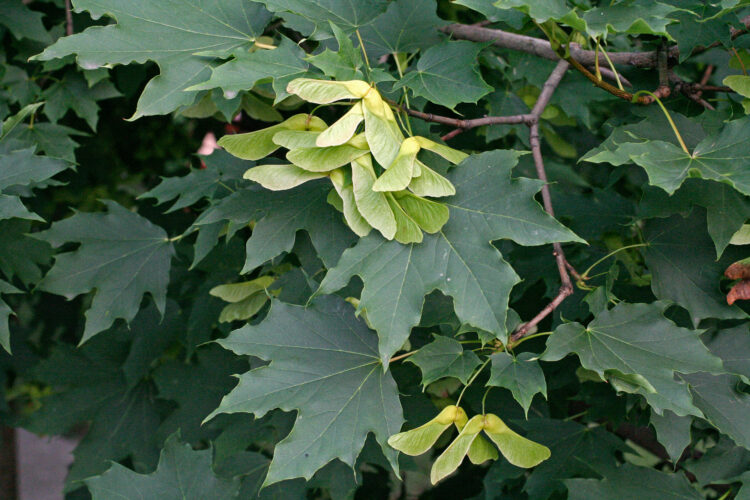
Norway maple
July 10,, 2006, Dublin Ohio.
The best field mark, however, is that the broken-off leafstalks exude a milky sap.
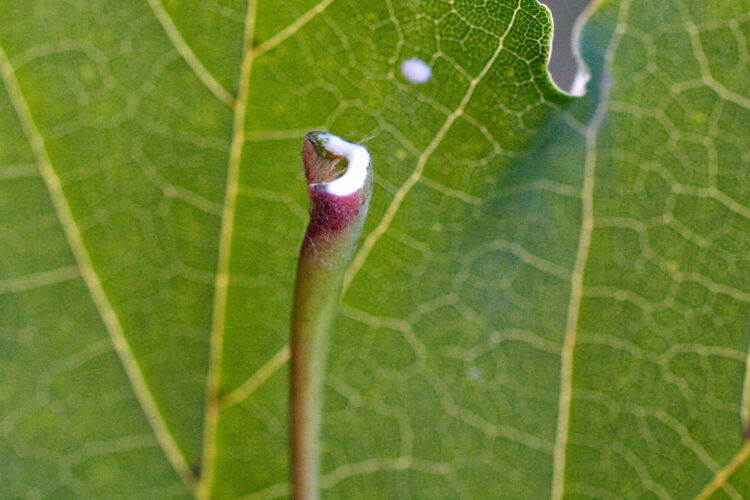
Norway maple has milky sap in the leaves
Another great Norway maple field mark is the terminal bud. It’s large, with only a few bud scales. Below see Norway maple on the left; sugar maple on the right.
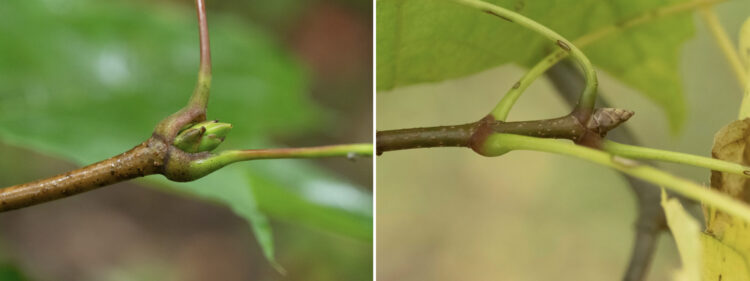
Norway maple (left) buds are thicker than those of sugar maple (right), and have fewer bud scales.
Flowers and fruits. Norway maple flowers are about 8 mm wide, with bright yellow petals. The species is especially conspicuous when in full bloom, about the 3rd week of April.
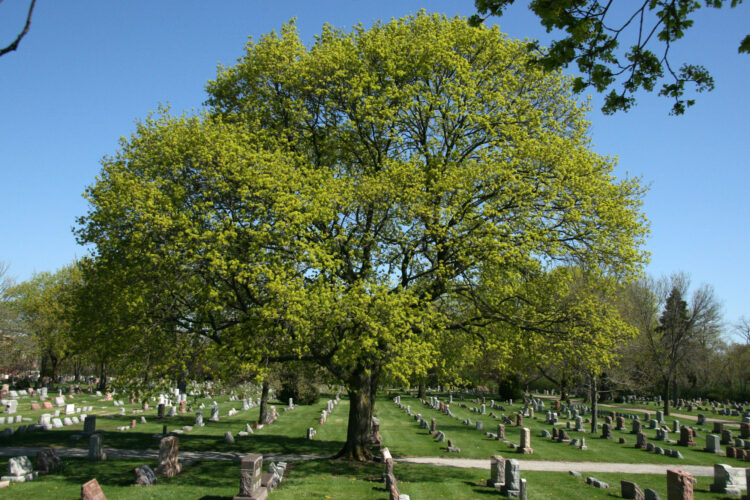
Norway maple in flower.
April 22, 2008, Union Cemetery, Columbus Ohio..
The flowers are in branched clusters.
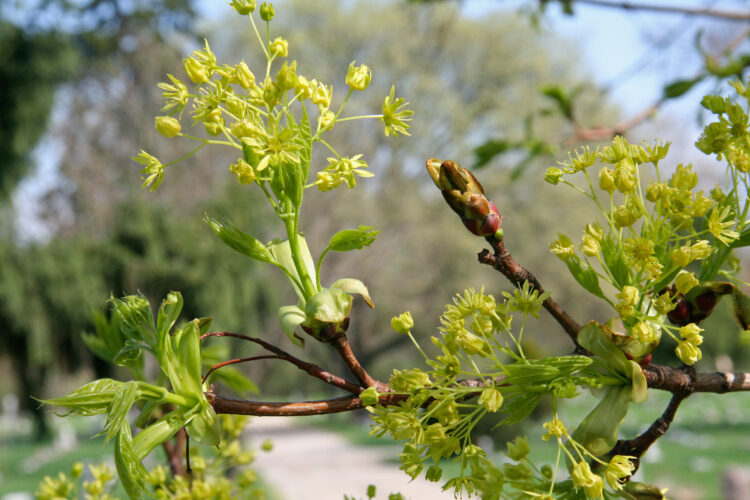
The flowers are born in branched clusters.
April 3, 2007 in Union Cemetery, Columbus Ohio.
The flowers are unisexual, i.e., either staminate (male) or pistillate (female) with both types either on the same tree (monoecious), or on separate trees (dioecious). Theyu have a thickened disk in the center. The female flowers can be recognized by their Y-shaped stigmas atop the disk, spreading widely to catch pollen grains drifting through the air. They also have vestigial stamens.

A pistillate (female) flower of Norway maple.
Male flowers have 8 stamens with fairly long filaments rising off the expanded central disk.
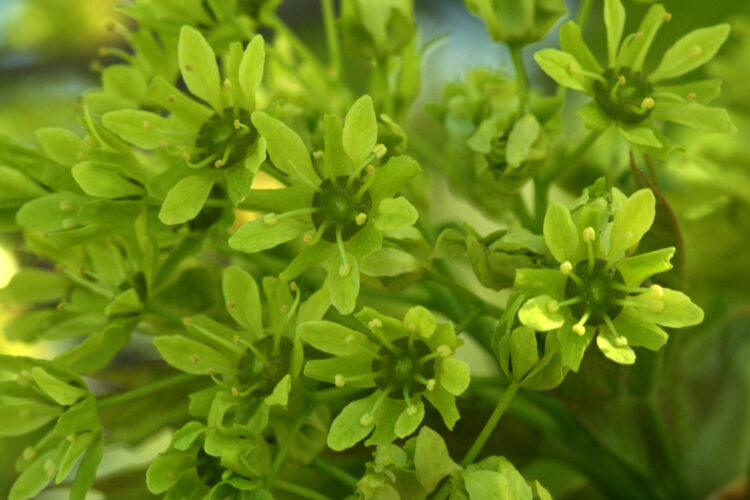
Male Norway maple flowers.
Here are the two flower types as seen partly dissected in a studio photo setup.

Norway maple flowers
left: pistillate. right: staminate
The other great way to recognize Norway maple is by the fruits. Unlike sugar maple, the samaras of which have small wings that lie nearly parallel with one another, Norway maple samara wings are wide-spreading.

Norway maples samaras have wide-spreading wings.
May 22, 2008, Union Cemetery Columbus Ohio.
In the winter. Maple twigs have a true terminal bud, and oppositely arranged leaf V-shaped leaf scars that meet each other across the twig. The terminal buds are plump and purple, with a few pairs of oppositely arranged (valvate) scales. (This is another good contrast with sugar maple, the buds of which are gray, with more numerous and distinctly shingled bud scales.)
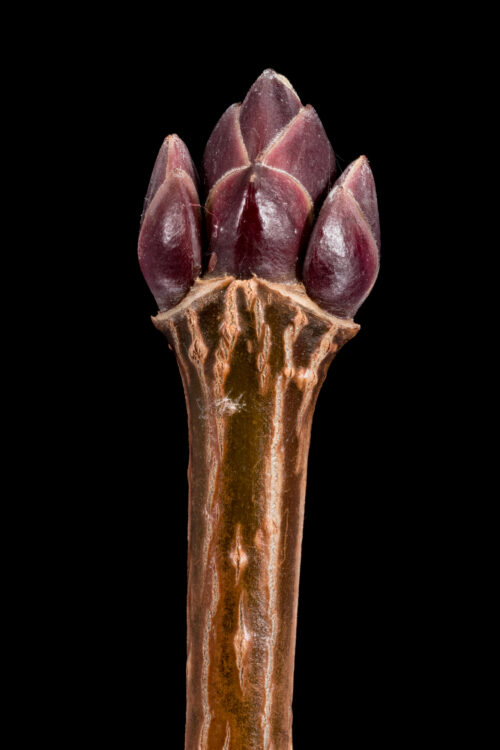
Norway maple twig
Where to find Norway maple (boo, hiss). E. Lucy Braun, in The Woody Plants of Ohio (1961, 1989; The Ohio State University Press) only tells us that this species is introduced and sometimes planted. Since then it’s become somerthing of a problem. The organization “Woody Invasives of the Great Lakes” (link), tells us the following about Norway maple:
“Norway maple invades open and forested areas, including old fields, open woods, forest edges, forest interiors, and transport and utility right of ways. Although it prefers full sun, seedlings can germinate and grow to maturity in shaded conditions (Munger 2003). It is most prevalent at disturbed sites such as abandoned residential, commercial and agricultural land, and highly fragmented and otherwise disturbed forests. However, studies have shown that Norway maple seedlings can establish and dominate in high-quality forest interiors (Webster et al. 2005).”
Scanned Image from an Old Book
(Flora of West Virginia, by P.D. Strausbaugh and Earl L. Core)
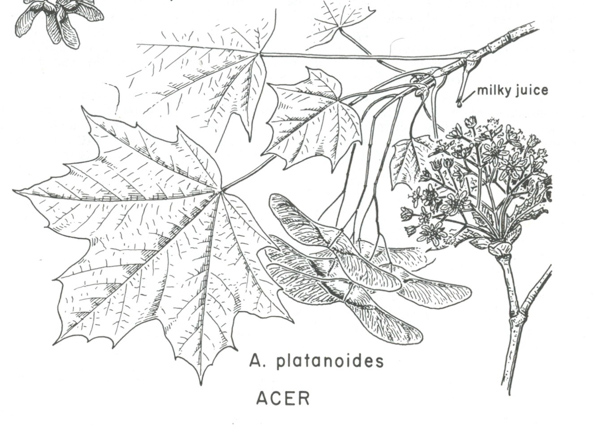
Norway maple
Oooh, ooh! I have a question!
What does the specific epithet “platanoides” mean? The epithet points out (“…oides” means “looks like”) a resemblance to plane tree, genus Platanus (which we usually call “sycamore”).
